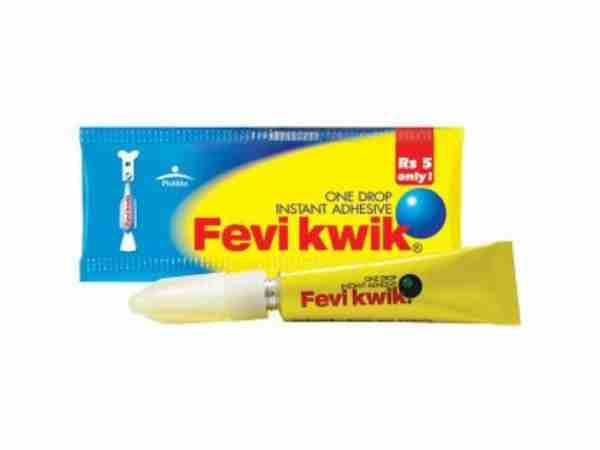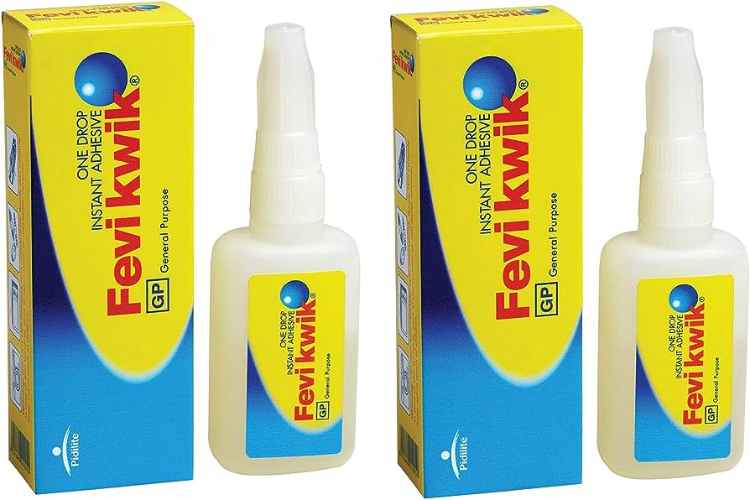We all usually have to face adhesive mishaps in our daily lives that can leave us dealing with sticky situations. Whether you’ve got Feviquick on your hands by accident or are coping with its residue on numerous surfaces, knowing efficient removal methods can come in handy. This article explores effective methods for safely and successfully removing Feviquick adhesive from hands, plastic, metal, and other materials. Learn how to remove this adhesive from surfaces without causing damage using a variety of techniques, including using everyday materials and specialized solvents.
Continue reading the article to know how to remove Feviquick from hand and other different surfaces with ease.
Way to Remove Feviquick from Hand
One of the most used ways on how to remove Feviquick from hand is acetone or nail polish remover. Feviquick can be removed from a variety of surfaces, including glass, metal, and some plastics, using nail polish remover, which typically contains acetone. However, it’s important to move slowly. It is advised to test acetone in a small area first to make sure it won’t hurt the material or produce discoloration as it has the potential to destroy some polymers.
Use a cotton ball or dampened cloth dipped in nail polish remover to gently massage the sticky area. To avoid causing surface damage, avoid vigorous rubbing. Moreover, if you are removing it from your hands then remember not to use it on broken skin as it will hurt.
Ways to Remove Feviquick from Hands Naturally
If you are looking for a way on how to remove Feviquick from hand without nail polish remover then you can use some natural ingredients which are quite effective as mentioned below:
- Use Soapy Water
The most basic solution for how to remove Feviquick from hand is using soapy water. It may be beneficial to soak the affected region in wet, soapy water unless the Feviquick is still wet. Very warm water and soap or detergent, but not hot water, should be added to a tub or bucket. Spend five to ten minutes washing the affected region. When the adhesive is tacky, gently massage it off the skin or peel it off. If the procedure hurts or looks like it might break the skin, stop.
- Use Lemon Juice
If you are looking for a way on how to remove Feviquick from hands naturally then the acid in lemon juice may help remove Feviquick. Small Feviquick patches and skin that have been adhered together can be separated using this method. The skin should be gently soaked in a dish of lemon juice for five to ten minutes. The lemon juice should then be applied directly to the skin using a toothbrush or cotton swab. Using a dry washcloth, rub the skin to break up the glue and at last wash your hands, and moisturize them.
- Use Butter, Oils
If the Feviquick is dried on your hand and you are looking for a way on how to remove Feviquick from hand after drying then you can use butter and oils. Feviquick-stuck fingers can be separated with the use of butter and oils, such as coconut or avocado oil. To remove the adhesive, try bathing the skin with warm water first. Next, apply oil or butter to the feviquick. Massage the area with extra oil until the adhesive disappears.
Way to Remove Feviquick from Eyes
Here is the way on how to remove Feviquick from eyes or eyelids. To begin with, rinse your eyes with warm water and avoid attempting to pull your eyelids apart. Visit your eye doctor; they might have some specialized methods for removing the adhesive. Your eye should naturally open up after a week if your eye doctor is unable to force your eyelids to move.
Way to Remove Feviquick from Nails
Many people usually look for how to remove Feviquick from nails so you can start by soaking them in warm soapy water for 10-15 minutes to soften the adhesive. Utilize a delicate object, such as a cuticle stick, to gently pry the adhesive. To further loosen it, apply oil (olive or coconut) or, using caution, try rubbing alcohol. Additionally effective is nail polish remover containing acetone, but hydrate afterward. Consult a nail technician or medical expert if the attempt is unsuccessful or painful to avoid injury. To protect your skin and nails, be gentle and patient throughout the procedure.

Way to Remove Feviquick from Metal
If you are wondering how to remove Feviquick from metal then follow these steps. Make sure there is enough ventilation first. Use a cotton ball or rag and a few drops of acetone or nail polish remover. Rub the adhesive region gently to help the solvent dissolve the glue. Change the cloth as necessary to remove the softened adhesive. To prevent harming the metal’s finish, don’t clean it too vigorously. Clean the area with mild soap and water after removal to get rid of any leftovers. Finally, give the metal surface a good rinse and dry it.
Way to Remove Feviquick from Plastic
An effective method on how to remove Feviquick from plastic is using vegetable oil. To soften the adhesive, add a few drops of vegetable oil and let it sit for a short while. After that, use a cloth or paper towel to gently rub the area to get rid of the glue. Once the adhesive has been removed, wash the plastic with mild soap and water to remove any remaining oil. This approach could take a little longer and more patience than using solvents, but it is less aggressive and less likely to damage the plastic surface.
FAQs
RELATED – BEST AGE FOR YOYO: KNOW ABOUT THE BEST AGE FOR YOUR CHILD TO PLAY WITH YOYO
Conclusion
Learning how to remove Feviquick from hands and surfaces gives you the power to fix glue accidents. This article discussed many approaches to cleaning up the mess, such as using common items or unique remedies. Keep in mind to use caution and test the techniques initially in small areas. We hope you found this article informative on how to remove Feviquick from hand and now with these techniques, you can deal with challenging situations with ease.

